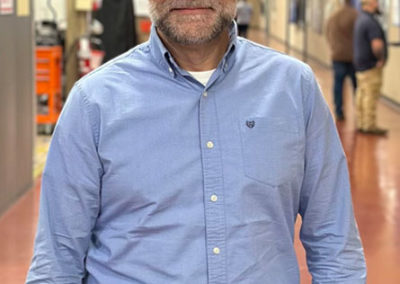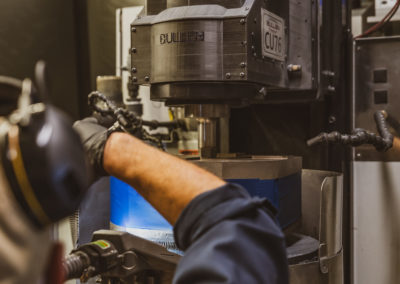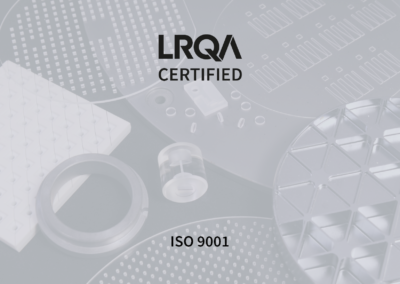The Power of Partnership: How Collaboration Helped a Customer Break Into a New Market
At the heart of our mission is a simple but powerful idea: being a collaborative partner. To us, that means showing up with curiosity, technical expertise, and a willingness to dig into the unknown alongside our customers. One recent project with a customer in the additive manufacturing space—trying to break into the automotive industry with their new tech—put that mission to the test.
A Bold Vision, a Fragile Material
This customer was developing breakthrough technology that could open doors into markets they had never competed in before. Their innovation hinged on using a new material that created a more premium part and offered better reliability and repeatability in design. There was just one problem: the material was extremely brittle. Most manufacturing approaches caused it to fracture under pressure—especially with the design’s thin floor constraint.
They came to us at a critical moment. The project was already under customer commitments, and every delay or failure pushed the project closer to the scrap pile. Several potential solutions had either failed in testing or were simply too cost-prohibitive to pursue. They needed more than a supplier. They needed a partner.
Iteration, Breakdown, and Breakthrough
We started by supporting initial prototypes. But even with our advanced machining, the plates continued to break down in their system. Rather than walk away, our engineering teams came together with theirs to take a deeper look.
That’s when things turned around.
Through close collaboration, we developed a new, more complex design and applied our ultrasonic machining process in a way that allowed the brittle plates to survive instead of shatter. Our precision equipment allowed us to machine all the necessary features simultaneously—without introducing added stress—making our solution more cost-effective than others they had explored.
Because we design our own custom precision machines, we also had the advantage of tailoring equipment geometry and tooling specifically for their part. This helped eliminate the limitations that had blocked other vendors.
Still Early, But the Results Are Promising
While it’s still early in the product lifecycle to measure full ROI, the customer has already seen cost savings compared to other approaches and is continuing to optimize both performance and cost.
Even more rewarding than the technical success has been the trust we’ve built. The customer acknowledged that the part geometry required tighter tolerances than we were used to. Our team had to create a custom fixture for the machines we used to hold the part in place. When they saw the result, they were impressed enough to want to highlight our work on an upcoming conference call to show the progress we were making.
What We Learned (and Why It Matters)
This project reminded us just how important it is to bring engineering teams into the process early. Early collaboration helped us avoid dead ends, streamline design iterations, and push the boundaries of what was possible with a very challenging material.
And this isn’t just a lesson for us. Industries like aerospace, semiconductors, and other high-performance sectors often require similarly tight tolerances, robust materials, and complex geometries. The earlier manufacturers and engineers collaborate, the more likely the design will be both manufacturable and performant.
We’ve demonstrated that we can support the move from easier-to-machine materials to more demanding ones like ceramics or silicon nitride—and that the benefits can be worth it.
If you have a precision machining need or are using an advanced material that is complex to work with, reach out to our sales engineers to see how we may be able to develop a solution for your challenge.





